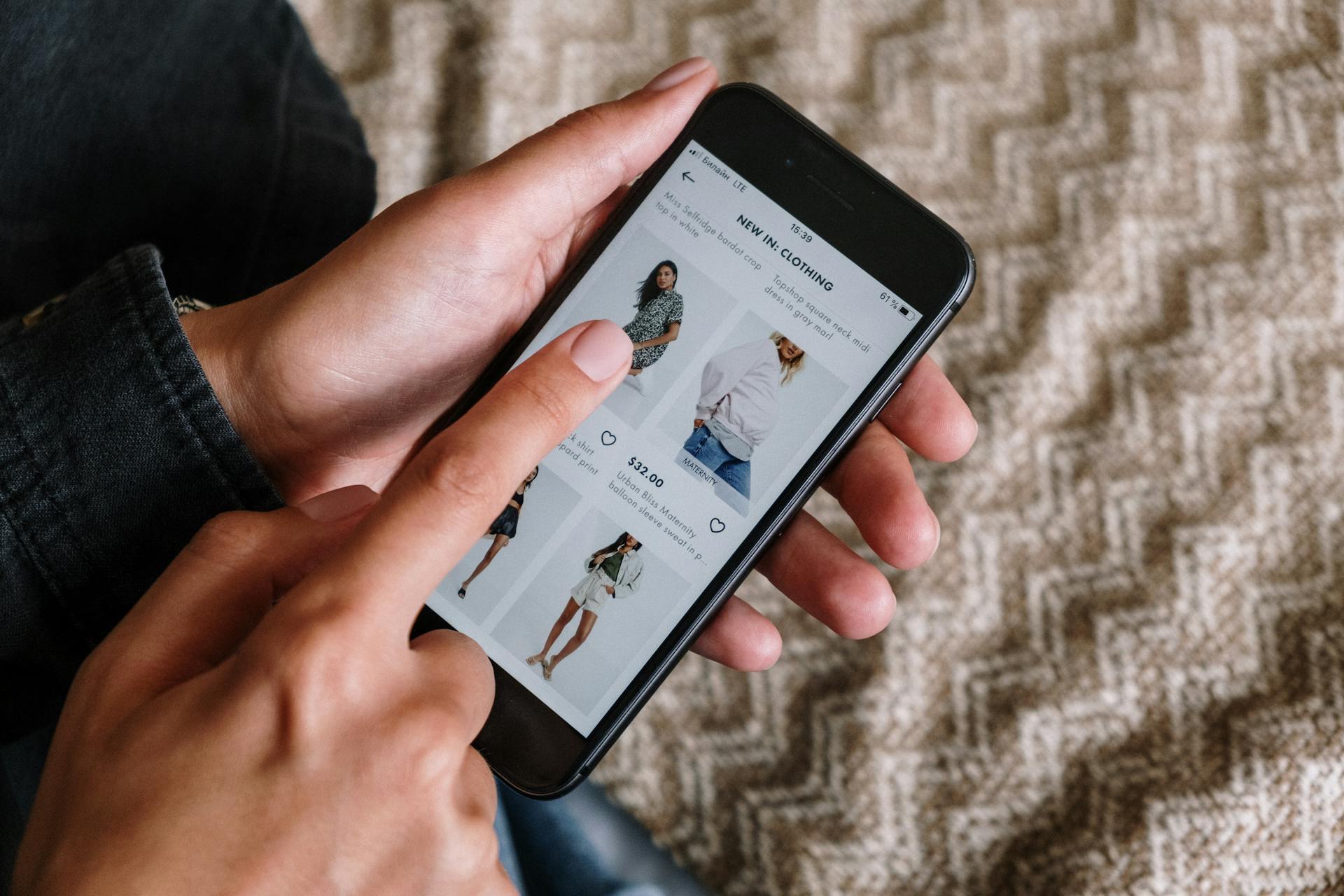Is web design just about making your site look better? No, it focuses on efficiency, user requirements, and business end goals when creating a website. In this article, we are sharing with you the benefits of good web design and more. Keep reading.
Exploring the benefits of good web design for a brighter future for your business
Do you want to earn profits for your business using the world’s biggest platform? Then you need a good website. That is when web design comes in. It shapes how people see your brand. A study from Stanford says that 75% of people decide if a company is reliable based on its website design.
But what is the real importance of web design? Did you know you could face serious consequences if you have poorly focused on your website design? You could even lose potential customers and damage your brand’s reputation. But, if you design your website well, you can get a positive first impression from your website visitors, maintain your brand consistency, and improve visitor’s user experience. It can also grow your search engine optimization (SEO) by implementing targeted keywords, meta tags, URLs, and other elements. Those help your website rank higher on search engine results pages (SERPs). That’s not all; a well-designed website can help you gain visibility, reach a wider audience, and attract more organic traffic.
Key elements of good web design
You need to use many elements to create a good website. Here are some of the most important ones.
Accessibility
Think your website is like a store for a second. You want everyone to be able to walk in and shop easily, right? That’s accessibility. You should ensure your website follows certain web rules and guidelines, like the Web Content Accessibility Guidelines (WCAG). It should work with different devices, browsers, and disabled people’s technologies. So, whether they use a screen reader, have trouble seeing colors, or navigate with a keyboard, they should be able to access your website regardless.
To improve accessibility, you can also do the following. Provide,
- Alternative text for images
- Captions for videos
- Transcripts for audio
- Keyboard navigation
- Contrast ratio.
- Clear labels for forms and buttons.
Simple navigation

People should not get lost trying to find things on your website. A good website has clear menus, breadcrumbs, and a logical layout with sitemaps to easily understand and describe what they are.
Eye-catching visuals

Your website should have high-quality images, videos, icons, illustrations, animations, and other graphical elements. They should be relevant to your content. But they don’t clutter things up or distract users from the content.
Clear and interesting writing
Your website talks to your visitors directly. So, your website writing or copy should be clear, engaging, and free of mistakes. Yeah, it must be a high-quality copy. You should also customize it to your audience, match it with the website’s tone, and fit it with each page’s purpose.
Clear Calls to Action (CTAs)

A good website uses buttons or links that tell people exactly what to do next, whether “Sign Up” or “Learn More.” They should be related to the content, explicit and interesting, and must make users want to click on them. You should also use specific CTAs for each page.
Why a great website makes all the difference
A well-designed website is a win for both users and businesses. Here are some of the main advantages of good web design.
Happy customers = Excellent user experience
People visiting your site should be able to find what they need and have a pleasant experience. Easy to navigate, clear info and attractive design can keep people browsing and returning for more. They will even consider recommending it to others.
User retention
Would not it be great if people loved your store so much they never wanted to leave?
A Google study says that 79% of people who do not like a website will not come back to it. Also, an Adobe study found that 59% of people like to browse beautifully designed websites over basic ones. A good website keeps visitors engaged. They find your site attractive, easy to navigate, and mobile-friendly.
More sales & sign-ups
If you have a well-designed website, your visitors can easily find what they need and take action, whether they buy a product or sign up for your service. It clearly shows them what you offer, why they should choose you, and how to do it all with a simple click.
Competitive edge
A good website design can help you get noticed in a crowded online world. It shows what makes you unique, gives a lasting impression, and shows you’re a professional player in your field.
The secret weapon for business success
Your website is like your online salesperson. It can work 24/7 to win you customers. A report by Forrester Research says that a properly designed website can increase conversion rates by up to 400%. Also, a survey by Blue Corona found that 48% of people said web design is the most important thing when deciding if a business is credible. Let’s discover the impact of web design on business.
First impressions matter
As we mentioned before, your website is often the first thing potential customers get to meet in the digital age. If your website has a visually appealing and user-friendly design, it can create a positive first impression. This builds trust and credibility.
Building your brand
Everything in your store should reflect your brand, right? A good website design can keep that theme going online. It uses the same colors, logos, and voice as your other marketing materials and makes you instantly recognizable.
Improves search engine ranking
Search engines prefer mobile-friendly, fast-loading, and well-structured websites. If your website’s design is good, you can align with SEO best practices, boost your website’s search ranking results, and attract more organic traffic.
Builds customer loyalty
Customers get satisfied by informative, helpful, and simple websites. Once they are satisfied with your website, they do not hesitate to come more often and give positive recommendations to others.
Nail your web design for success
Want to lead the industry and earn more profits for your business? Then, you should take a look at the following web design best practices.
Keep it clean!
Do not fill your website with unnecessary things or distracting things. Instead, focus on important information and features that improve your website and users.
Make it responsive.
Today, people browse on phones, tablets, laptops, and even through Vision Pros. So, ensure your website adjusts to each screen size and works well. Use flexible layouts, media queries, and breakpoints to change your website’s design based on the device’s size.
Optimize for speed
Nobody likes a slow website. It is like waiting in a long line. Make sure it loads quickly and smoothly. Use tools like Google PageSpeed Insights or GTmetrix to check and improve your website speed.
Know your visitors
Before you build, figure out who you are building your website for!
What do they need?
How do they use the web?
Your website should be a place that meets their needs and solves their problems.
Use a grid system.
A grid system can help you organize everything into neat rows and columns. It keeps your website consistent and sharp-looking on any screen.
Pick the perfect colors.
Colors can really affect how a website feels. Choose colors that match your brand, the message, the purpose, and the tone of each page. Just make sure the colors are clear enough for contrast, readability, and accessibility.
Choose the right fonts.
Fonts can add personality to your website. Choose readable fonts. They should also match your business’s overall style. Do not go overboard with too many different fonts.
Optimize images for the website
Images are perfect for getting visitor attention. But big, heavy images slow your website. Resize, compress, and use the right image format to keep your website speedy.
Test and iterate
What is the best way to know if your website works? It is testing. Test and actually see how people use your site, gather feedback, and make adjustments. You can use website test methods like usability testing, user feedback, analytics, and A/B testing.
Why hire a professional for your website?
Today, you can find many tools and platforms to create a website without needing to use any coding skills or design skills. Even an AI can do it for you. But none of that compares to what professional web designers bring to the table. Here are some of the benefits of professional web design.
Making a good first impression
First impressions matter online, too. A professional can design a credible website and make you look amazing compared to those amateurs or DIY attempts.
Expertise
Professional web designers have the wisdom and experience to make a website to match your business needs and goals. They know all the latest trends, best practices, and technical parts (SEO, security, maintenance, and more) to create a perfectly fit website for you. They can also advise you on the best practices and everything you need to know about web designing.
Customization
Want to customize your website to perfectly reflect your brand? Hire a professional web designer. They show what makes your business special with their web design skills. They can also add specific features to make your site simple and enjoyable.
Quality you can trust
Want to make sure your website is top-notch and meets all the latest standards? Get a professional. They also test your website thoroughly before launch to ensure it is error-free.
Save time and money
DIY seems cheaper, right? But professionals can get it right the first time and save you time, money, and frustration.
No more bounce!
A professionally designed website can keep visitors engaged and exploring your uniqueness. They don’t just bounce away after visiting your home page. They stay on your site longer and see what your business offers.
Support
Professional web designers don’t disappear after launch. They’ll be there to keep your website updated, secure, and running smoothly. They also help you with any changes or updates that you might need in the future.
Conclusion
Web design affects how users see and use a website. Then, it affects how they see and use a brand. The benefits of good web design go for both visitors and businesses. You need to follow the best practices in web design and focus on the key elements of web design to maintain an effective online presence. Don’t consider investing in professional web design an expense; you get more business value in return on your web design journey with a professional web designer.

